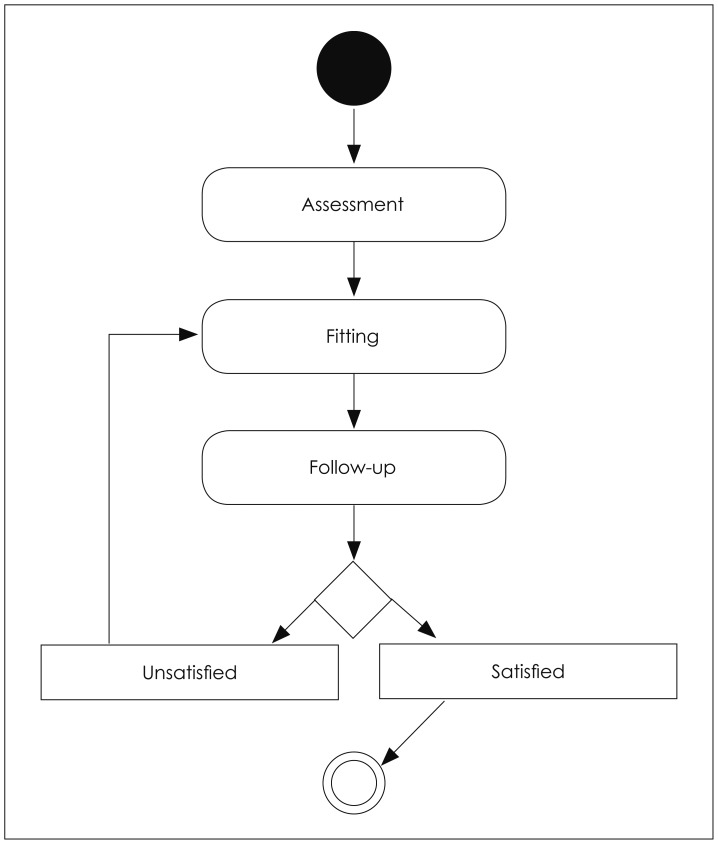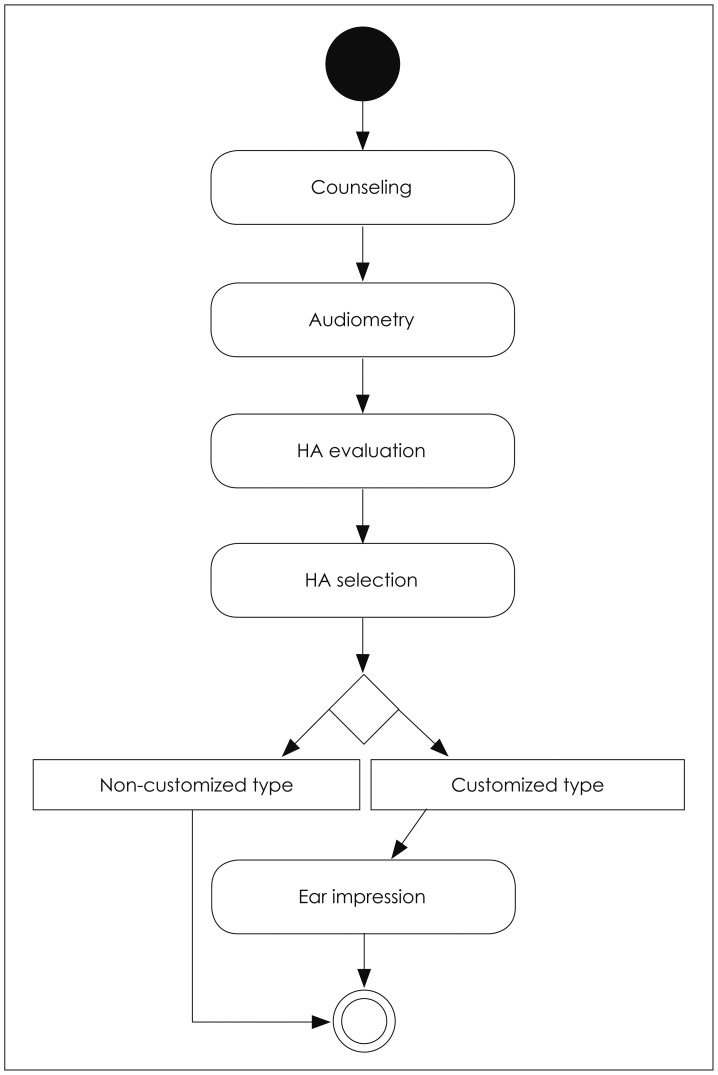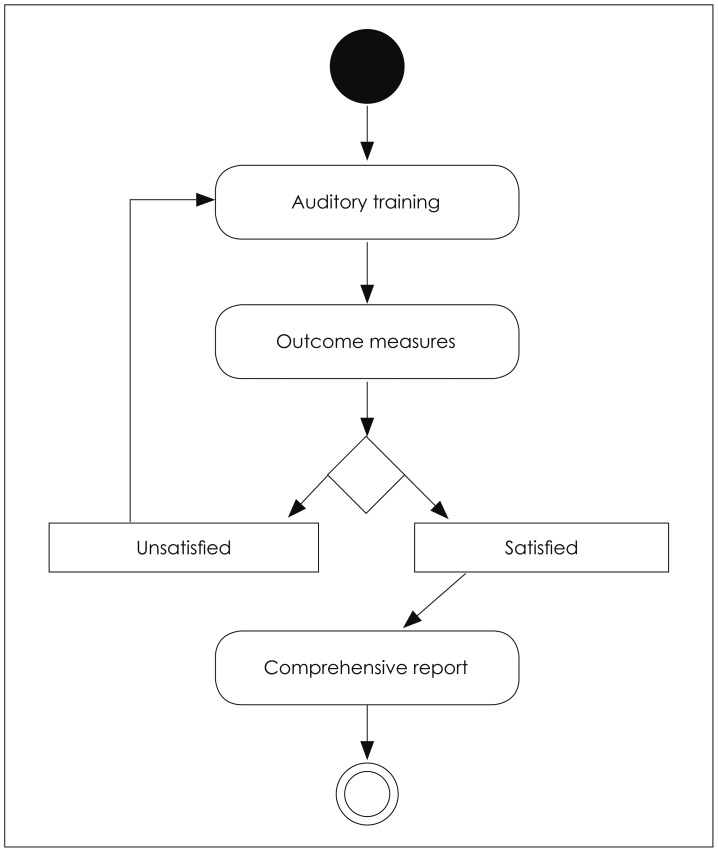 |
 |
- Search
| J Audiol Otol > Volume 20(1); 2016 > Article |
|
Abstract
Acknowledgments
References
Fig. 1
General framework of hearing aid fitting management. The symbols in each figure (Fig. 1, 2, 3, 4) follow the unified modeling language [27].

Fig. 2
Assessment module. Placing counseling on the first stage of this module does not indicate that counseling will be exclusively performed at the first stage of HAFM. Counseling component is inclusive across three modules although it was not shown in other figures. HAFM: hearing aid fitting management, HA: hearing aid.

Table 1.
Overview of the components of hearing aid fitting management based on worldwide guidelines
Australia (1): Audiological Society of Australia, 2013 [11], Australia (2): Dillion, 2012 [12], Canada: College of Audiologist and Speech-Language Pathologist of Ontario, 2014 [15], European U. (1): EN 15927, 2010 [16], European U. (2): Association European Hearing Aid Professionals, 2011 [17], European U. (3): European Union of Hearing Aid Acousticians, 2014 [18], International: The International Society of Audiology, 2004 [19], New Zealand: New Zealand Audiological Society. [20], S. Korea: Lee and Lee, 2005 [21], UK (1): British Academy of Audiology, 2014 [13], UK (2): Modernising Children's Hearing Aid Services, 2014 [14], USA (1): American Speech-Language Hearing Association, 1998 [22], USA (2): American Academy of Audiology, 2006 [23], USA (3): American Academy of Audiology, 2013 [24], USA (4): American Academy of Audiology, 2015 [25], WHO: World Health Organization, 2004 [26]. S.: South, UK: United Kingdom, HA: hearing aid
- TOOLS
-
METRICS

-
The Gaps between Knowing and Doing in Hearing Aid Fitting Management2017 July;21(2)
Hearing Aid Fitting and Verification1998 ;2(1)
REUR(Real Ear Unaided Response) Performed before Hearing Aid Fitting1997 ;1(1)
Feasibility of Real Ear Measurement for Hearing Aid Fitting in Preschoolers2010 ;14(3)







